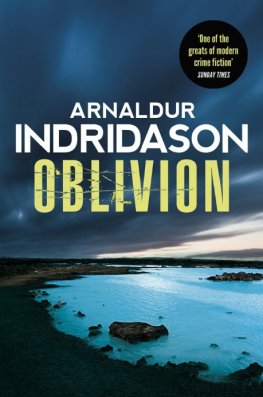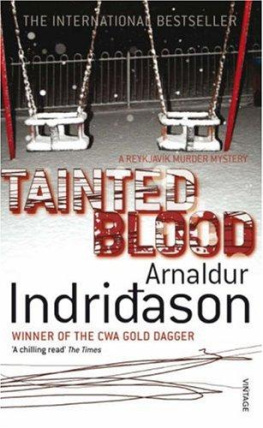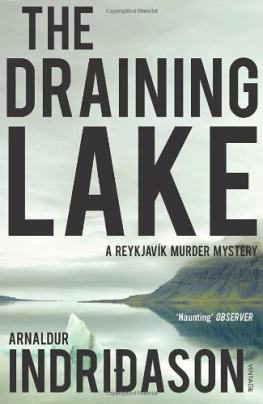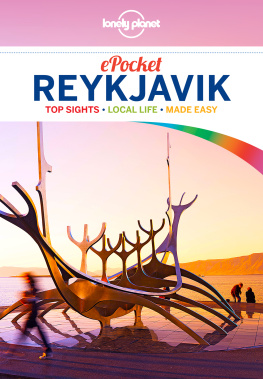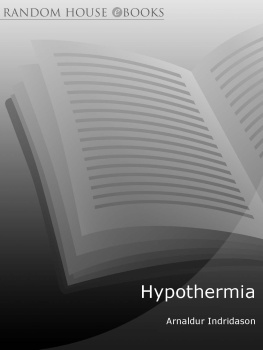Arnaldur Indridason
Oblivion
Were just one big barracks slum to them,
arent we? One big... Camp Knox?
Detective Erlendur SveinssonA fierce wind was blowing over Midnesheidi Moor. It had swept south from the highlands, across the choppy expanse of Faxafli Bay, before ascending again, bitterly cold, onto the moor where it whistled over gravel beds and ridges, whipping a pale etching of snow over the sad, stunted vegetation. Exposed to open sea and northern blast, only the toughest plants survived here, their stalks barely protruding above the level of the stones. The wind raised a shrill screeching as it penetrated the perimeter fence which loomed out of this bleak landscape, then hurled itself against the mighty walls of the aircraft hangar which stood on the highest ground. It raged with renewed force against this intractable obstacle, before hurtling away into the darkness beyond.
The noise of the wind carried into the vast interior of the steel-frame hangar. One of the largest structures in Iceland, covering 17,000 square metres and as tall as an eight-storey building, it had doors opening to the east and west that could accommodate the wingspan of the worlds biggest aircraft. This was the operational hub of the US Air Force 57th Fighter Interceptor Squadron on Midnesheidi. Here, repairs were carried out to the fleet of AWACS spy planes, F-16 fighter jets and Hercules transports. Huge pulley systems for manoeuvring aeroplane parts hung from girders running the length of the roof.
At present, however, work in the hangar was suspended for the most part due to the installation of a new fire-extinguisher system. A specially reinforced scaffolding tower reached right up to the ceiling at the northern end of the building. Like everything to do with the hangar, the job was a Herculean task, involving the laying of a network of pipes along the steel roof girders, which connected to a series of powerful sprinklers, spaced at intervals several metres apart.
The scaffolding tower stood on its wheels like a mobile island in the hangar. It was assembled from a number of smaller platforms with a ladder in the middle leading up to the main platform at the top, where the plumbers and their mates had been at work. Stacks of pipes, screws and brackets lay heaped around the base of the structure, together with toolboxes and adjustable spanners of all shapes and sizes, the property of the Icelandic contractors who were installing the sprinkler system. Nearly all the construction and maintenance work at Naval Air Station Keflavk was in the hands of local entrepreneurs.
All was quiet apart from the desolate howling of the wind outside when suddenly a low whine came from the direction of the scaffolding. A section of piping fell to the floor and rolled away with a clatter. Shortly afterwards there was another, more substantial rush of air and a man hit the ground with an oddly muffled thud, as if a heavy sack had been dropped from the roof. Then all was quiet again apart from the keening of the wind.
At times the patches on her skin itched so badly she wanted to claw at them with her nails until she drew blood.
She had been a teenager when she started developing these rashes, like eczema but coarser. She didnt know what she had done to deserve such a disfiguring affliction. The doctor had spoken of accelerated cell division in the skin, which resulted in these raised red patches with a scaly white crust that tended to cluster around her elbows and forearms, on her calves and, worst of all, on her scalp. She had received medical treatment in the form of drugs, ointments and creams, but these were only intermittently effective in keeping the rashes and itching at bay.
Then recently her doctor had told her about this place down south on the Reykjanes Peninsula. News had spread among patients suffering from the same or similar skin complaints that the water there alleviated the irritation. Something to do with its silica content. Following the doctors directions, she had stumbled upon the place in the lava field, close to the power station, where the milky-blue, geothermal waste water spread out amid the mossy rocks. It took her some time to clamber there over the rough terrain but when she lay down in the soft water and began to smear the sediment on her skin she experienced a degree of relief from the itching and even a sense of well-being. She slathered the mud all over her face, hair and limbs, convinced that it was easing her symptoms and sure that she would come here again.
Since then she had visited the lagoon every so often, each time with a feeling of pleasant anticipation. She left her clothes on a clump of moss as there were no changing facilities and was always on her guard as she didnt wish to be seen. She wore a swimsuit under her clothes and brought along a large towel to dry herself with when she got out.
The day she came across the body she had immersed herself full-length in the silky water, letting it lap her in warmth and comfort, and applied the mud to her skin, hoping that the silica, or whatever the doctor had called it, the minerals and algae would work their magic. The water felt warm and soft, the sediment soothing, and the location amid the old lava flow was tranquil and unusually beautiful. She savoured every moment, enjoying this time alone with her thoughts.
She was on her way back to the edge when she saw what looked like a shoe floating in the water. At first she was indignant, thinking some antisocial litterbug must have thrown it in the lagoon, but when she went to remove it, she discovered to her horror that it was still attached to its owner.
The interview room in the remand prison at Sdumli was small and drab, with uncomfortable chairs. Yet again the brothers were being uncooperative and their interviews were dragging on. Erlendur had expected no different. The brothers, whose names were Ellert and Vignir, had been cooling their heels in jail for several days now.
It was not the first time they had been in trouble with the law for smuggling alcohol and drugs. Two years ago they had been released from Litla-Hraun after serving a three-year sentence for the same crimes, but their spell inside had done little to improve their characters. It appeared that they had simply picked up where they left off and in fact there was ample evidence to suggest they had continued to run their business from inside. The interviews were intended to clarify this point.
An anonymous tip-off had led the police to focus on their activities, and as a result Vignir was seized with twenty-four kilos of hash in a potato store not far from Korplfsstadir, to the north-east of Reykjavk. The police also found two hundred litres of American vodka in gallon bottles and several cardboard boxes of cigarettes. Vignir denied all knowledge of the goods, claiming that he had been tricked into visiting the shed someone he didnt wish to name had lent him the keys and told him he could lay his hands on some free potatoes there.
The brothers had been under surveillance for several days before the police took action. A search of their home turned up a stash of cannabis intended for sale. They had done little to refine their methods over the years; their last arrest had taken place in almost identical circumstances. Marion, who regarded them as brainless, petty thugs, was sick to death of the pair of them.
What ship did the goods come in on? Marion asked wearily. Erlendur had already put the same question twice.
There was no ship, retorted Vignir. Who told you that? Was it Ellidi? The stupid fucker.
Was the resin imported by sea too or did that come by air? asked Erlendur.
I dont know who that shit belongs to, said Vignir. I dont know what youre talking about. Ive never been near that shed before. I only went there to nick some spuds. Whos been feeding you this crap?

